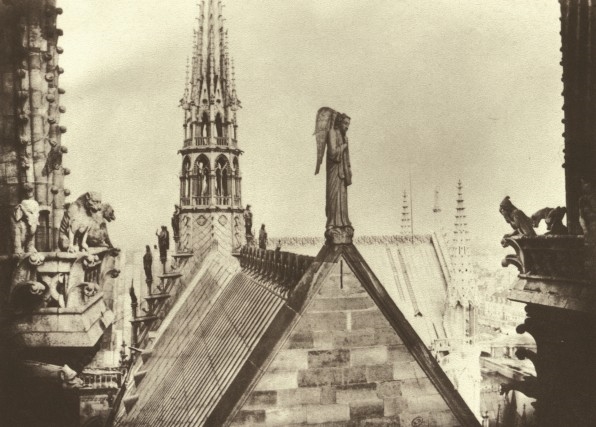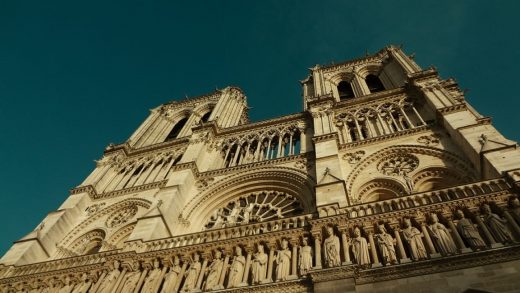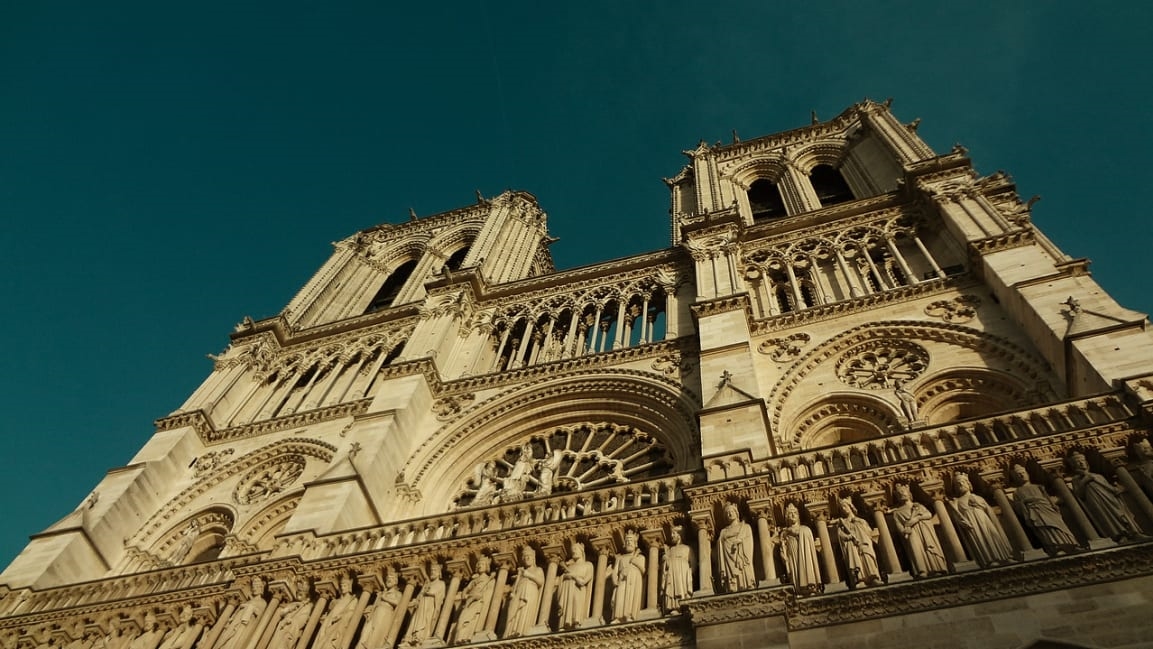Maybe Notre Dame shouldn’t be rebuilt exactly as it was
Should you chop down an ancient forest to rebuild an ancient cathedral? That’s one of the tough questions that France and all those around the world who adore Notre Dame may have to answer when the church eventually moves from catastrophe to the reconstruction phase. And even if they find the wood, do they want to replace the fire damage with the very same materials that went up in flames?
There will be plenty of time to ponder this–and many other questions to come. “Months of evaluation and information gathering will be required before anyone can even begin to think about what appropriate solutions would be,” says Peter Pfau, design director at the San Francisco studio of architecture and design firm Perkins+Will.
“French authorities will [make] a very detailed assessment of what happened, and how different systems performed,” says Robert Kornfeld Jr., preservation architect and principal with engineering firm Thornton Tomasetti. Although his job is to maintain the historical integrity of buildings, Kornfeld isn’t an absolutist about copying the technology and methods of the past. What matters to him is to conserve the building’s aesthetics and the experience of visiting it.
Preserving the experience
“I think that everything that you could see will be built the way it was originally built,” says Kornfeld. “When you look up [from inside], you’ll see the stone vaulted ceiling. When you look from the outside, you’ll see the top of the roof, but they may modify the roof assembly itself.”
It’s happened before. The great cathedral of Reims lost its wooden roof when it was set ablaze by bombardment in World War I. The decades-long rebuilding included upgrading to a steel roof. (Restoration work on Notre Dame’s wooden structure likely caused the fire in the first place, a frequent peril during renovations.)
But just as dangerous as a slavish adherence to ancient tradition would be an arrogant rejection of medieval technology. “Heavy timbers actually perform quite a bit better in a fire than aluminum or steel would,” says Sinéad Mac Namara, a Syracuse University professor who focuses on structural engineering. Metal loses its strength under high heat, although it can be insulated to protect against that. Trees have a natural fire resistance, she says, forming a layer of char on the surface that insulates the interior.
Obviously that only goes so far, as the total incineration of the wooden roof and spire attest. Wood does dry out over the centuries, and the way it’s treated and maintained can help or hurt its resilience, she says.
Any fire resistance requires large pieces of wood, perhaps 10 inches thick. So-called stick construction, like the 2-by-4s used in many homes, quickly goes up in flames. And it’s hard to find heavy timber nowadays. “We don’t, at the moment, have trees on our territory of the size that were cut in the 13th century,” Bertrand de Feydeau, vice president of preservation group Fondation du Patrimoine, told France Info radio.
Beyond the logistical question is the ethical one. The old roof of Notre Dame was called “The Forest,” because apparently an entire forest was chopped down to build it. Even if another suitable forest could be found, should it be sacrificed? Just 4% of European woods are primary forest, according to a 2018 study, which describes them as “forests undisturbed by man.”

A tradition of breaking with tradition
The rebuilding of Notre Dame may extend well beyond the wooden components. While the bulk of the church is made of inflammable stone, it’s not immune to fire. “Hot things expand and cold things contract,” says Mac Namara, referring to the twin stresses of fire and water the building was exposed to on April 15. “If anything has shifted or moved or cracked, depending on the scale of that damage, you’d have much more extensive structural repairs, on top of the roof and spire, plus all the cosmetic work to be done.”
If so, this might provide more opportunities to consider newer technologies, methods, and designs. Rather than a break with tradition, modernization has actually been essential to many ancient buildings like Notre Dame, which have regularly been upgraded over the centuries, says Mac Namara. The flying buttresses that steady the nave have been raised higher over time, for instance.
Even the aesthetics of such buildings change. The iconic spire that burned and collapsed was added during a 19th-century renovation of the cathedral, when it was already six centuries old. “If [Notre Dame] has to go back to exactly how it was, then my question would be: ‘When do you mean?’” says Mac Namara. “Do you mean 1345? Do you mean 1900? Do you mean 1985? Because the cathedral’s had a life, and it’s been different. Various innovations have taken advantage of new technologies and new knowledge in the past.”
New tech might even be useful simply to speed up the reconstruction. “They’ve got to find the craftsmen, they’ve got to find the materials, and [contend with] the time scale that goes with that,” says Edward Lewis, construction project manager at the University of South Florida St. Petersburg (and husband of my colleague Michelle Lewis) who has worked on the restoration of centuries-old timber-frame buildings in the U.K.
(Delays due to money, however, may be less of a problem than originally feared. About a billion dollars has already been raised, which could be enough–or even more than enough–depending on how much damage has occurred.)
No one wants to see a rushed, slapdash reconstruction, but the sooner the cathedral can be responsibly rebuilt, the more people can experience its beauty and splendor. A building or artwork isn’t valuable in itself, but rather in how it inspires and enriches the people who visit it and take in its presence. French president Emanuel Macron has proclaimed that the work will be completed within five years, a very aggressive time frame. If it stretches to a decade or several decades, many people will miss the experience of Notre Dame.
Stephane Bern, a TV presenter who has hosted programs on medieval France, bemoans that he may not see the church’s completion. “It will be rebuilt for future generations,” the 55-year-old told AFP.
Wisdom of the ages
Newer isn’t always better, though, even from a technological perspective. Architects and engineers sometimes underestimate or even miss innovations used in the past. Mac Namara again points to the flying buttresses used in many Gothic churches. The vertical columns that support them are traditionally topped in a large pyramidal or conical element called a pinnacle. These were long thought to be purely decorative, she says, but studies in the 19th and 20th century found that they were added to provide extra weight that steadies the buttresses. (Mac Namara studied under one of the experts who did the research.)
Robert Kornfeld points to the impressive stone ceiling vaults, which mostly held back the tons of burning timber that collapsed onto them, saving much of the church’s interior. (They also play a critical role in stabilizing the walls, Mac Namara points out.)
“People haven’t gotten around yet to really praising the original builders,” says Kornfeld. “Every generation of structural engineers, as they develop better theories and better analytical abilities, come to recognize how brilliant the Gothic builders were.”
(24)



